The Supreme Court has been acquiring works of art since the 1830s, beginning with busts and portraits of the Chief Justices. These objects were placed in the Courtroom and Robing Room when the Court met in the U.S. Capitol, seen to left and right. With the move to the Supreme Court Building in 1935, efforts to add to this collection increased, and by 1973, Chief Justice Warren E. Burger had created the Office of the Curator to manage this collection. Today, objects from the collection are used throughout the building and in the changing exhibition program.
The Curator’s Office continues to build this collection through donations and with the support of the Supreme Court Historical Society. If you know of a Supreme Court-related object, please contact the Curator's Office.
Some of the collecting areas include:
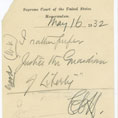 |
Archives
includes oaths of office, speeches, docket books, miscellaneous papers of Justices, as well as some documents relating
to the construction and architecture of the Supreme Court Building.
- To request access to the small collection of historic docket books, please follow these Instructions.
- The official case-related papers are transferred by the Clerk's Office to the National Archives.
- For a complete listing of the location of Justices papers, please refer to the Directory of Manuscript Collections Related
to Federal Judges maintained by the Federal Judicial Center.
|
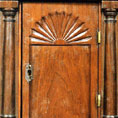 |
Decorative Arts
includes historic furnishings, antique furniture, and other decorative arts. Collection pieces are used in many rooms throughout
the building. Significant items include Chief Justice John Marshall's Bench Chair, a clock owned by Joseph Story and Late Federal sideboard, attributed
to Thomas Seymour, Boston, Mass., c. 1815. |
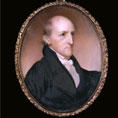 |
Fine Arts
includes portraits, miniatures, and busts of Justices and those associated with the Court many of which are on exhibit
throughout the building. |
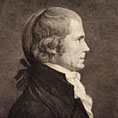 |
Graphic Arts
includes lithographs, engravings, and photographs associated with the Justices, former meeting places of the Supreme Court,
the Supreme Court Building, and other related topics. |
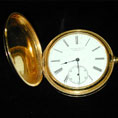 |
Memorabilia & Ephemera
includes objects that are associated with Justices such as furniture, robes, desk sets, clocks, and traveling cases. |